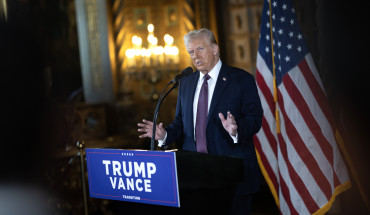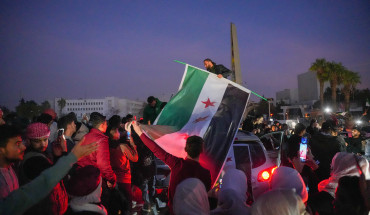Decision-makers in Iran are in a unique position. Years of sanctions, which ostracized the country and crippled its economy, have been lifted, giving way to a deluge of foreign investment in energy, consumer goods and other key economic sectors. These two factors together have already paid political dividends for the leadership in Tehran, which has used the influx of investment to finance its military opposition to the Saudi-led Sunni bloc in Syria and Yemen and to legitimize its status as a critical regional and even global actor.
Fundamentally, the relevance of Iran in the international arena is inextricably linked to its hydrocarbon potential. It is well-documented that Iran is home to more natural gas than any other country, and contains the second-largest quantity of proven oil reserves in the world. It is little surprise then that its future depends on the yet-unanswered question of whether or not the country will devise a strategy that allows it to harness its resources. There are indications that both possibilities are viable.
Resurgence
Much of the enthusiastic speculation relating to the Iranian energy sector post-2015 centers on just how the Iranian energy sector will look moving into the future. Often described as the Iranian economy in microcosm, the Iranian energy sector was once one of the most robust and technologically advanced in the world before increasingly surgical sanctions eliminated its ability to obtain outside financing and modern technology.
The impact of sanctions on the energy sector, like the rest of the Iranian economy, was significant. They led to decreases in oil production and refining capacity and forced the Iranian government to cancel three projects in the then still comparatively inchoate liquefied natural gas (LNG) sector after partners Eni and Total withdrew. Tehran adopted a suite of measures that promoted conservation and self-reliance and enshrined them in short-to-medium term policy plans as part and parcel of its “resistance economy.” While these prescriptions helped the government to avoid economic collapse, stave off significant domestic upheaval, and thereby ensure its longevity, they led to massive knowledge deficits and prompted many top Iranian engineers and scientists to look for jobs abroad.
In the past three years, however, the country has taken impressive strides toward regaining its status as one of the most important energy producers in the world. In September 2016, the International Energy Agency announced that Iran had already reached its pre-sanctions crude oil production and export levels and signed multibillion-dollar exploration contracts with Eni, Rosneft and the Chinese National Petroleum Company. In parallel, Total and the National Iranian Oil Company began exploration in South Pars, part of the largest natural gas field in the world, and announced plans to build or expand natural gas pipelines to Turkey, Oman, Pakistan and India.
These and other initiatives related to Iranian renewable energy potential, the modernization of the downstream and midstream segments and the return of the country to the LNG market were promoted widely by Iranian government officials as steps towards regaining relevance on the world stage. As many of these projects are bilateral or multilateral initiatives, their realization could lead both to growth in the Iranian economy and increased Iranian influence throughout the region.
Conflicting priorities
Rhetoric notwithstanding, Iran’s ability to realize these goals is far from assured. Modernizing the downstream and midstream segments is arguably the most important of the three. If this is realized, Iran would have the ability to move natural gas and other hydrocarbons more efficiently throughout the country and to either export pipelines or to liquefaction plants near the country’s main ports. This would increase its flexibility and broaden its network of potential partners, particularly in South and East Asia. But while securing financing to increase the sophistication or capacity of any of its six refineries is fairly straightforward, building a more advanced network of pipelines, particularly for natural gas, will require lengthy negotiations with landowners and other regional stakeholders as well as sweeping reforms of relevant regulation. As of now, the Iranian government has not explained what steps it will take to do so or how long any initiative of this magnitude will take.
The same conflict of priorities is also evidenced by government statements regarding the use of natural gas and renewable sources in Iran. As early as 2014, the Iranian government stated its commitment to using renewable sources to reduce its reliance on hydrocarbons and free up more of its own resources for export. While development of renewable power generation in Iran has increased at a promising pace, the country has also significantly increased its commitment to using its own natural gas. In early February 2018, the Iranian Ministry of Oil announced on its website and social media accounts that natural gas would be used to satisfy 98 percent of heating needs and power 100 percent of non-renewable power generation plants. It also stated that use of natural gas for transportation fuel would increase by 10 percent to make up 30 percent of that segment.
Iranians are some of the largest per capita consumers of energy in the world. And as the government significantly subsidizes its energy prices, much of its growing natural gas production will be used to satisfy internal demand at sub-market prices rather than for sale at international market prices. This will also raise questions over the viability of Iranian government plans to export gas abroad, either via pipeline or as LNG. In early 2018, the Iranian Minister of Petroleum Bijan Namdar Zanganeh cancelled its only LNG project, an initiative involving Belgian LNG company Exmar and a joint venture between Norwegian LNG company Hemla and a subsidiary of the Iranian national petrochemicals producer Kharg Petrochemical Company. The contract was reportedly cancelled after some of its provisions were subject to criticism from conservative segments of the Iranian political sphere. Besides a pipeline connecting cities in Iran and Oman, the country has not made meaningful progress on any of its pipeline initiatives.
Looking forward
Iran is clearly in a unique position. The 2015 reversal of economic sanctions led to massive inflows of investment and rampant speculation over how the Iranian economy would evolve as a result. This has been centered most of all on energy, historically the most important sector in Iran and one on which its decision-makers remain focused.
In addition to increasing oil output and pledging to modernize Iranian refineries, an ambitious program of midstream, LNG and international pipeline projects have been widely promoted by politicians in Tehran as a means of increasing Iranian influence on both regional and global levels. The feasibility of these projects is, however, far from assured due to the inherent financial, regulatory and operational uncertainties its leaders must assess and resolve in the near-to-medium term.
Photo: ATTA KENARE/AFP/Getty Images
The Middle East Institute (MEI) is an independent, non-partisan, non-for-profit, educational organization. It does not engage in advocacy and its scholars’ opinions are their own. MEI welcomes financial donations, but retains sole editorial control over its work and its publications reflect only the authors’ views. For a listing of MEI donors, please click here.













